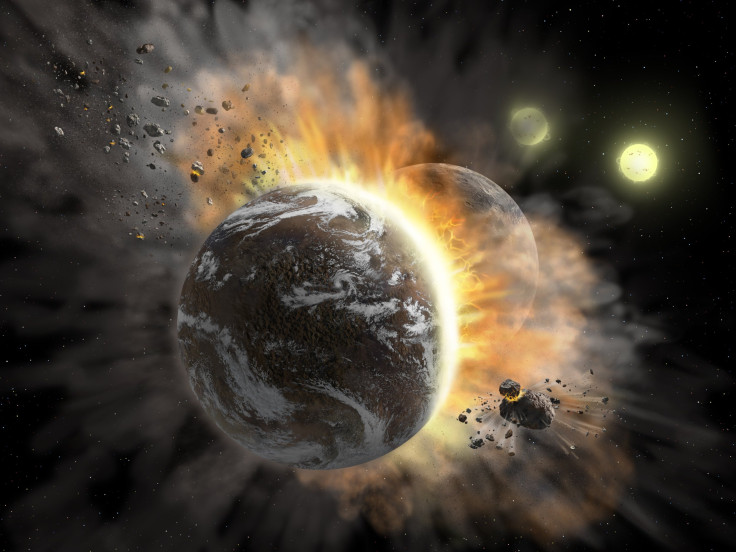Astronomers Witness Aftermath Of Exoplanets’ Violent Collision

Astronomers using NASA’s space telescopes were able to discover traces of a violent collision between two exoplanets in a distant star system. According to experts, a similar collision between Earth and a Mars-sized object that occurred billions of years ago led to the formation of the Moon.
The astronomers spotted the cosmic fender-bender between two exoplanets in a double-star system known as BD +20 307, which is located about 300 light-years from Earth.
The astronomers noted that this system is quite mature, with stars already about a billion years old. However, despite the system’s age, the dust debris swirling within it is still warm, which strongly suggests that it was produced by a massive impact that happened recently.
Evidence of the impact was first detected around 10 years ago through the data collected by NASA’s Spitzer Space Telescope and other ground observatories. Recently, a team of astronomers using the Stratospheric Observatory for Infrared Astronomy, which is NASA and the German Aerospace Center’s airplane-based telescope, revealed that the traces of warm dust debris increased by 10 percent.
Through their observations, the astronomers were able to conclude that a massive collision occurred within BD +20 307.
“The warm dust around BD +20 307 gives us a glimpse into what catastrophic impacts between rocky exoplanets might be like,” lead astronomer Maggie Thompson of the University of California said in a statement. “We want to know how this system subsequently evolves after the extreme impact.”
According to the astronomers, finding traces of massive cosmic collisions is very important because they can provide clues regarding the formation process of planets. When two cosmic objects collide, the leftover dust particles are pulled by the gravitational force of a nearby star.
Eventually, these particles clump together and grow larger, forming an exoplanet. Experts believe that the Moon was formed through the same process when a collision involving Earth and another cosmic object as big as Mars occurred around 4.5 billion years ago.
The findings of the astronomers regarding the cosmic collision in BD +20 307 were presented in a new study published in The Astrophysical Journal.
© Copyright IBTimes 2025. All rights reserved.





















